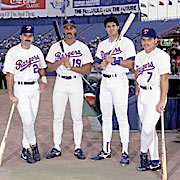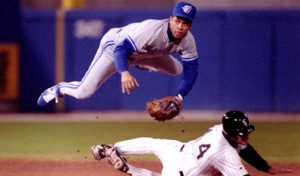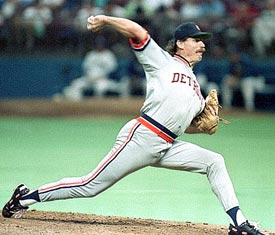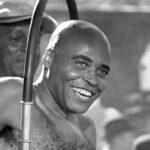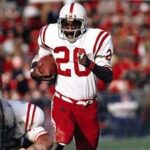Statistics Can Be Misleading When Selecting for the Baseball Hall of Fame

Rafael Palmeiro hit 25 home runs in three seasons with the Chicago Cubs before going on to bigger and better things with the Rangers and Orioles.
If career statistics were the only judge, then picking the members of the 2011 Baseball Hall of Fame induction class would be pretty easy. However, the continuing shadow of the “Steroid Era” in baseball has ensured that for the next decade or so picking Hall of Famers will be anything but easy.
There are 19 newcomers to the Hall of Fame ballot for 2011 and it is difficult to predict if any will ever receive a plaque in Cooperstown.
Statistically speaking, there seems to be two “no brainers” and a third who would probably earn a spot. However, it is likely that only one of those three will be a serious contender for the Hall of Fame.
Based purely on the numbers, Rafael Palmeiro has the credentials to be an easy HOF pick. He is one of only four players in major league history with more than 3,000 hits and 500 home runs. The other three players are Hank Aaron, Willie Mays and Eddie Murray.
However, the number for Palmeiro that most Hall of Fame voters are likely to remember is one, as in failed steroid tests after emphatically claiming to Congress that he had never used steroids.
That alone seems enough to ensure that Palmeiro will never be inducted into the Hall of Fame and will probably have a hard time earning enough votes to stay on the ballot for his entire 15 years of eligibility.
In some ways, Palmeiro is as much a poster child of the steroid era as Barry Bonds, Mark McGwire, Sammy Sosa and Roger Clemens, but in a different way.
While Bonds and Clemens were likely Hall of Famers before ever using steroids and McGwire and Sosa used the drugs to break single season records, Palmeiro pretty much flew under the radar and despite being accused of using by Jose Canseco would have probably earned a Hall of Fame plaque had it not been for his positive test.
Of course we have no idea when Palmeiro started using steroids, but the change in his statistics is pretty pronounced.
Palmeiro was a solid player during his first five major league seasons hitting .296 with 602 hits and 47 home runs between 1986 and 1990. He hit a then career-best 14 home runs in 1987 while with the Cubs and matched that total with the Rangers in 1990.
Suddenly in 1991, he began a string of 14 straight seasons with 22 or more home runs and during that stretch exceeded 30 home runs 10 times, including four seasons of more than 40 blasts.
By the time he failed a drug test during the 2005 season, Palmeiro had already eclipsed the 500 career home run mark and finished his career with 569 home runs, 3,020 hits, 1,835 RBI and a .288 batting average.
The interesting thing about Palmeiro is that even as he was compiling these eye-popping statistics, he wasn’t really earning significant accolades across the league. He was selected to the All-Star game only four times during his career and one of those trips was in 1988 when he was still with the Cubs and had only eight home runs for that entire season.
Palmeiro also finished in the top 10 in the MVP voting only three times and never higher than fifth.
While Palmeiro didn’t receive a lot of accolades during his playing days, his long-time Texas Ranger teammate Juan Gonzalez was twice named the American League MVP and finished in the top 10 on three other occasions.
During the peak of his career between 1991 and 2001, Gonzalez hit more than 40 home runs in a season five times and had eight seasons with more than 100 RBI, including 157 in 1998.
With career totals of 434 home runs, 1,404 RBI and a .295 batting average, Gonzalez would be a serious Hall of Famer candidate had he not been regularly mentioned as a likely steroid user and been named in the infamous Mitchell Report that came out in 2007.
The third newcomer to the Hall of Fame ballot is longtime Houston Astros slugger Jeff Bagwell. Unlike Palmeiro and Gonzalez, Bagwell has never been specifically mentioned as a likely steroid user. However, given that his eye-popping statistical rise and fall mirrored that of the steroid era, it will be very interesting how Hall of Fame voters look at his career.
Bagwell spent all 15 seasons of his career with the Houston Astros and compiled 449 home runs, 1,529 RBI and a .297 batting average.
During his first three seasons, Bagwell hit 15, 18 and 20 home runs respectively before exploding for 39 home runs in just 114 games during the 1994 season. He ended up being named National League MVP during that strike shortened campaign.
From 1996 to 2003 he hit more than 30 home runs each season, including a career-high 47 in 2000. He also hit better than .300 four times during that stretch and exceeded 100 RBI in eight of nine seasons.
At the age of 36 his numbers declined slightly to 27 home runs, 89 RBI and a .266 batting average in 2004. Then the following season injuries limited him to just 39 games and three home runs in what proved to be his final major league season.
His combination of average, power and run production would seem to make Bagwell a solid Hall of Fame candidate. However, even ignoring the steroid era situation, it seems difficult to believe that Bagwell will get enough initial support to be elected in his first year of eligibility and could have a tough sell to ever earn a Hall of Fame plaque.
As a first baseman, I think Bagwell will be looked at in a similar light to Steve Garvey, Don Mattingly and Fred McGriff. All three were perennial All-Stars and standouts during their careers, but ultimately their careers didn’t quite meet Hall of Fame standards. In my estimation, Bagwell wasn’t appreciably better than any of those players and in an era of inflated numbers I just don’t think he meets the cut.
Among returning players, it is likely that both Bert Blyleven and Roberto Alomar will earn a spot in the Hall this year.
Entering his 14th year of eligibility, Blyleven missed by only five votes a year ago and seems destined to get into the Hall of Fame this year.
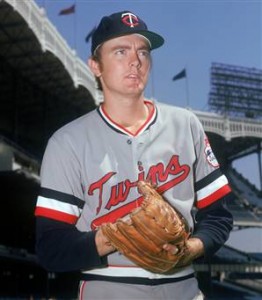
Bert Blyleven was 19 years old when he made his major league debut and he pitched in the majors for 22 seasons.
No player in the history of the Hall of Fame voting has seen his vote totals increase so drastically as Blyleven. After getting only 14.1% of the votes during his second year of eligibility in 1999, his numbers started to annually increase to the point he received 74.2% last year.
And all without throwing a single pitch.
As I understand it, his rise can be attributed to the increased use of sabermetrics to analyze statistics. According to something called Wins Above Replacement (WAR), Blyleven ranks 13th all-time among pitchers.
Call me old fashioned, but I believe that determining if someone is a Hall of Famer is more related to actual results instead of manufactured statistical analysis. For Blyleven, the reality of his career is that his totals of 287 victories and 3701 strikeouts are as much a result of his longevity (22 seasons) than of greatness. When averaged out over 162 game seasons, his average season saw a 14-12 record with a 3.31 ERA and 183 strikeouts.
In addition, he registered more than 17 victories in a season only twice in his entire career and was selected to only two All-Star teams. He also received Cy Young consideration only four times throughout his entire career and never finished higher than third in the voting.
In my opinion, those are not Hall of Fame numbers.
Nonetheless, it is likely that he will get the additional five votes needed this time around.
Another player likely to earn induction this time around is second baseman Roberto Alomar.
Last season in his initial year of eligibility, Alomar fell just short with 73.7% of the votes. He should have little trouble gaining the votes needed this year.
In my opinion, there is little question that Alomar is a Hall of Famer. He was one of the best defensive second basemen in history with ten Gold Gloves and excellent range.
Offensively, he didn’t hit as many home runs as some other second basemen of his era, but he had 794 career extra base hits and drove in over 1,000 runs. Combine that with a career .300 batting average, 2,724 hits and more than 1,500 runs scored and you have one of the best offensive second basemen in history.
The infamous spitting incident while Alomar was a member of the Baltimore Orioles as well as a sharp decline over his final three seasons probably cost Alomar some votes last year, but he should have no trouble getting the needed 75% this time around.
Two other holdover candidates who could inch closer to eventual induction are pitcher Jack Morris and shortstop Barry Larkin.
Like Blyleven, Morris has seen his vote total increase from under 20% during his second year to a total that could eventually get him enough votes for induction.
Now in his 12th year of eligibility, Morris received 52.3% last season.
The winningest pitcher of the 1980s, Morris earned 254 victories during his 18-year career with an average season of 16-12 with 157 strikeouts.
What hurts Morris is his career ERA of 3.90. However, unlike Blyleven, Morris had a number of dominating seasons. He won 20 or more games three times and finished in the top 10 in Cy Young voting seven times.
He also twice won two games in a World Series and his game seven outing against the Atlanta Braves in the 1991 Fall Classic is one of the greatest individual pitching performances of all-time.
I expect that Morris will continue to gain momentum as he nears his 15th year of eligibility, but don’t expect him to ever receive 75% from the writers. I do, however, think he will eventually receive induction through the Veterans Committee.
That Barry Larkin earned 51.6% in his initial year of eligibility makes it very likely that he will eventually get enough votes for induction.
A 12-time All-Star and the 1995 National League MVP, Larkin’s career is comparable to a number of middle infielders who have earned spots in Cooperstown.
With a .295 career batting average, nine Silver Slugger awards, three Gold Gloves and 1,329 career runs scored, Larkin’s numbers seem to be Hall of Fame worthy.
But with the fickle nature of the Hall of Fame voters you just never know what will happen. So, we will see Wednesday just how many of the 33 eligible candidates receive the needed votes. It certainly will be interesting and create additional opportunities for debate.
